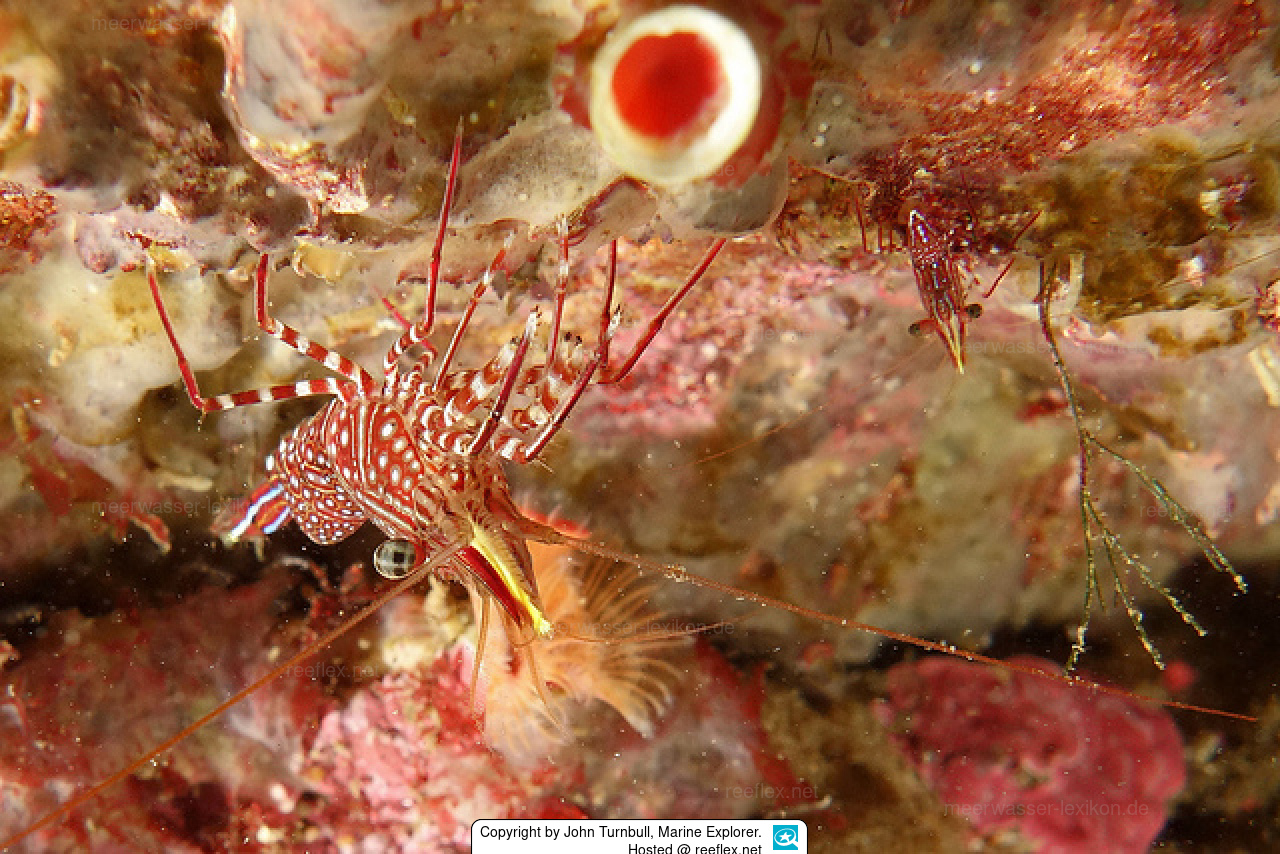Info
The Hinge-back Shrimp(Rhynchocinetes serratus) is a very colourful and attractive shrimp species that belongs to the family Rhynchocinetidae. The Hinge-back Shrimp has a complex pattern of spots and bands along the back of its body that are fluorescent in colour and they also have prominent bands on their legs. Hinge-back Shrimps are so named as they their articulated rostrum can be moved up and down independently of the head.
The Hinge-back Shrimp often forms small colonies and will inhabitat caves and crevices. They are more active at night and divers will often encounter them in their torch beam whilst looking in cracks and crevices of the reef. They grow to a maximum length of 6cm.
Source: Scuba Equipment USA - Marine Species Gallery
Synonyms:
Hippolyte serratus H. Milne Edwards, 1837
Rhynchocinetes rugulosus Stimpson, 1860
Classification: Biota > Animalia (Kingdom) > Arthropoda (Phylum) > Crustacea (Subphylum) > Multicrustacea (Superclass) > Malacostraca (Class) > Eumalacostraca (Subclass) > Eucarida (Superorder) > Decapoda (Order) > Pleocyemata (Suborder) > Caridea (Infraorder) > Nematocarcinoidea (Superfamily) > Rhynchocinetidae (Family) > Rhynchocinetes (Genus) > Rhynchocinetes serratus (Species)







 John Turnbull, Marine Explorer, Australien
John Turnbull, Marine Explorer, Australien













